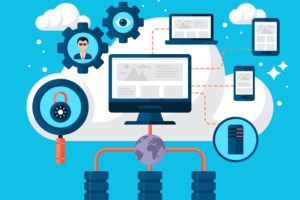In this age of digital transformation, businesses rely heavily on technology to maintain efficiency, security, and competitiveness. However, many companies unknowingly incur hidden costs by using outdated IT systems—leading to financial loss, security vulnerabilities, and decreased productivity. The longer businesses delay upgrading their systems, the higher the risks become.
The Hidden Costs of Outdated IT Systems
1. Increased Security Vulnerabilities
Older IT systems lack critical security updates, making them an easy target for cybercriminals. Outdated software and hardware often have unpatched vulnerabilities that hackers exploit to gain unauthorized access to sensitive data.
Example: A mid-sized law firm running outdated systems experienced a data breach due to an unpatched vulnerability in their server. The attack exposed confidential client information, leading to legal repercussions and loss of trust.
Solution: Regular software updates and system upgrades help protect against modern cyber threats. Implementing a proactive cybersecurity strategy ensures business continuity and compliance with data protection regulations.
2. Downtime & Productivity Loss
Old systems often suffer from frequent crashes, slow performance, and compatibility issues, leading to extended downtime. This not only affects daily operations but also frustrates employees and reduces overall productivity.
Example: A retail business relying on outdated inventory management software faced system failures during peak sales seasons. Employees had to resort to manual tracking, causing delays in order fulfillment and dissatisfied customers.
Solution: Investing in modern, cloud-based IT solutions enhances efficiency and ensures seamless workflow operations, preventing costly interruptions.
3. Higher Maintenance & Repair Costs
The cost of maintaining legacy systems increases over time. Businesses often spend more on patchwork fixes, emergency repairs, and IT support instead of investing in a more sustainable, long-term solution.
Example: A healthcare provider spent thousands on emergency IT support due to recurring system failures. Each fix was only a temporary solution, adding up to a much larger expense over time.
Solution: Replacing outdated systems with scalable and cost-effective solutions reduces long-term IT expenditures and enhances performance.
4. Compliance & Regulatory Risks
Many industries have strict IT compliance requirements, and failing to keep systems updated can result in legal penalties. Non-compliance with data protection laws (such as GDPR or HIPAA) can lead to heavy fines and reputational damage.
Example: A financial institution using outdated software failed a security audit, leading to non-compliance penalties and lost business opportunities.
Solution: Regular system audits and compliance-focused IT upgrades help businesses stay ahead of regulatory changes and avoid costly fines.
5. Competitive Disadvantage
Businesses that rely on outdated IT systems struggle to compete with industry leaders who embrace cutting-edge technology. Slow processes, lack of automation, and poor customer experience hinder growth and innovation.
Example: A logistics company lost contracts to competitors offering real-time tracking and automation capabilities that their outdated system couldn’t support.
Solution: Digital transformation and modern IT infrastructure improve efficiency, customer satisfaction, and market positioning.
A Real-World Lesson
A growing manufacturing company realized they were falling behind competitors due to slow processing times and constant system failures. After suffering a costly cyberattack, they finally made the decision to upgrade their IT infrastructure. By adopting cloud-based solutions and automation, they significantly improved security, efficiency, and customer service—proving that investing in technology is investing in success.
Similarly, at Vodigy, we’ve helped businesses transition from outdated, vulnerable systems to secure, scalable, and high-performance IT environments. Our expert team ensures that organizations stay ahead of security risks, compliance requirements, and operational inefficiencies.
How to Future-Proof Your Business
Conduct Regular IT Assessments – Identify weak points and plan strategic upgrades. Invest in Scalable Solutions – Choose IT systems that can grow with your business. Prioritize Cybersecurity – Implement strong security measures to protect data. Automate and Modernize – Leverage automation for efficiency and cost savings. Train Employees on New Technology – Ensure smooth adoption of modern IT systems.
The cost of waiting to upgrade outdated IT systems far outweighs the initial investment in modernizing technology. Cybersecurity risks, lost productivity, compliance issues, and higher maintenance costs can cripple a business if left unaddressed.
Don’t wait until it’s too late—take action now to safeguard your business’s future! Contact Vodigy today to explore how we can help modernize your IT infrastructure and keep your business ahead of the competition.




